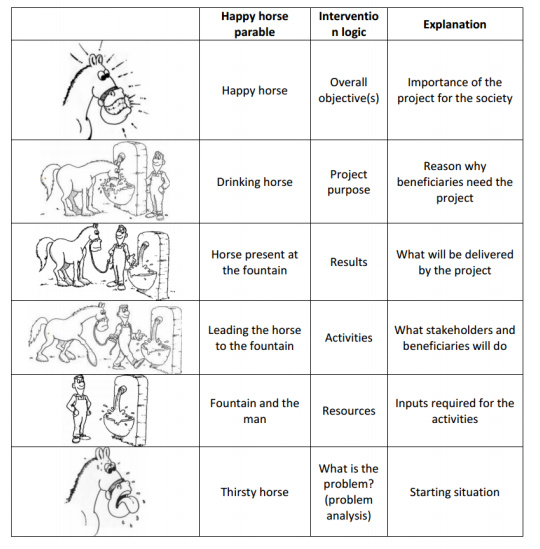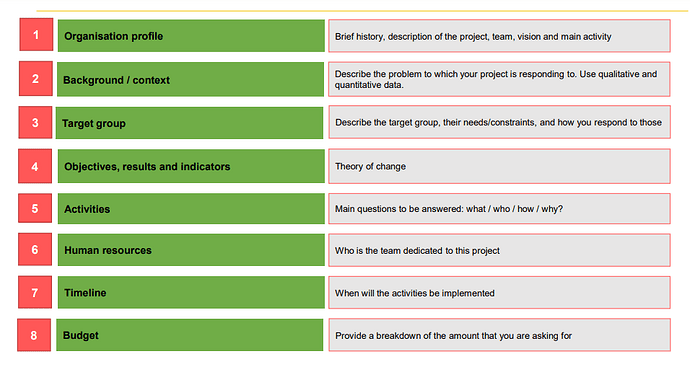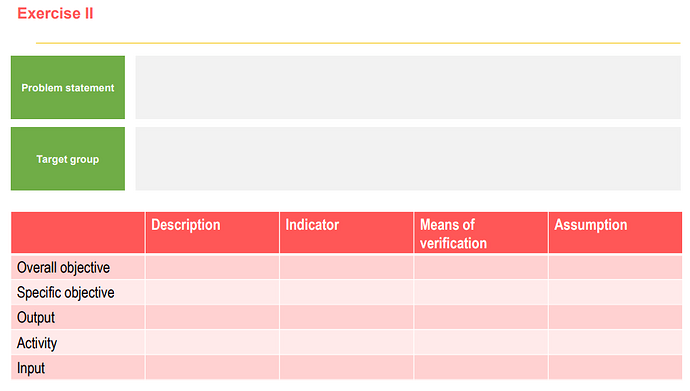Objectives of this Lab:
-
Fundraising for social startups: to develop the various fundraising options for social startups, share ideas on how to develop a fundraising strategy, and to provide guidance on how to establish clear fundraising goals.
-
Theory of change and proposal writing: to develop a theory of change that can be used internally by the startup and to be presented to donors and support organizations.
1. What is Fundraising?
Fundraising is about relationship building; it’s a process that will help you achieve your goals.
It’s a continuous process, so you will need either to have a person in charge of that, or you will dedicate certain amount of time every week to look for funds, partners, to work on your pitch, to send emails, to meet people etc .
After giving a quick introduction about fundraising, the mentor asked “ has any of you started with fundraising?”
@HadeerGhareeb : since we are facing the COVID19 crisis, our revenue are decreasing, we are currently looking for funds, especially to support our social part we are doing now.
Nabil J (project leader at enactus esprit ICT - project: gluten free flour) we are searching for funds right now, we are looking online (USAID, German Embassy) but we haven’t approached people or investors. We are facing problems we are not understanding.
2. Challenges to access to finance for Social Enterprises
- Limited sources of funding; we have banks with loans but their interest rates are quite high, and they don’t really understand social enterprise models
- Investors are traditionally more interested in Return on Investments than social impact while in SEs you have to balance between sustainable business models and social impact
- Therefore SEs have relied on competitions and international donors; these grants are linked to the impact and non-refundable; These are useful at the early stages of projects, but not always adapted at later stages as the projects expand
Abdullah Al Atrash, social enterprise owner from egypt: " we’re still in the seed funding round, we’re an early startup. We encountered some individual investors, if we balance the social impact and the revenue, we have the gap where larger companies / technical industries invest the same and get larger revenue."
Rebeka: Investors are traditionally more interested in Return on Investments than social impact; one of the good things is that, slowly, there’s this awakening awareness and there are social impact funds that are emerging.
There are not a lot of them, and they are not always accessible, that’s why we need to look at other sources at the beginning stages (before you have proven that you are making money)
Before you consider who you are going to approach as potential donor or funding partner, you need to think about your fundraising strategy
At first, you need to work internally and to have a clear vision where you project is evolving to (what is your project, who is your target, which direction you want to grow). you will have your project timeline, what idea you will be testing, who you need to approach, where do you need injection of cash, your funding needs etc…
Then you can set a clear fundraising strategy.
Once you’ve identified all of your funding needs, you will need to prioritize.
the next step is to think of the means you will be using to present your project to investors and donors.
Basically you will have to explain the project, present the entrepreneurs, etc. but you will need also to back it up with actual data that will make people believe in your project more.
Then, you’ll have to thinks of types of donors you need to approach; here you need to be selective, because you don’t want to end up partner with donors who do not share your vision, who have very different goals. For that, do your research, target people and understand them.
while fundraising, do not forget to reach a level of self sustainability so that you can keep going regardless the external environment.
choosing the type of funding partners for you:
This depends on:
-
the development stage of your project
-
the amounts you need to raise (small, large, …)
-
what kind of support you are looking for
To wrap up the first section, the mentor proposed an exercise and a Q/A session.
Exercise 1 (send your answers on a word document to open.cilab@gmail.com )
What are my fundraising needs for the:
a) short-term
b) Mid-term
c) Long-term Can I prioritise?
What are related milestones (in terms of $ and/or impact)?
What kind of partner is best for my needs?
Do I understand the needs and vision of each of my partners?
Would you invest/support?
What is different about your SE?
Questions from the attendees:
Q1: Moussa: “You talked about social impact but not environmental impact?”
A: I am using “social impact” as an umbrella term for social and environmental impact.
Q2: @ayari.taha “Embassies give grants to NGOs and associations not startups and social entrepreneurs, do you have ideas where we can find grants.”
A: There are certain ones that gives to social entreprises, USAID, Tunisia Jobs program, GIZ, tfannen, … look at this link you can find certain programs that you can apply as a business.
Q3: @HadeerGhareeb : “Are there entities that provide fund that lasts all over the year (without calls)”
A: it depends on the institutions;
Q4: how do I know if their vision is aligned to mine? if I am going to approach the embassy, who do I need to approach exactly?
A: first thing you can look at their websites you will find what objectives they are already working on in your country.
As per who to contact, it depends from embassy to embassy. you have to contact the person of the cooperation development. You can always contact and ask to be referred to the right person.
Q5: Moussa: when dealing with fundraising and partnership you have to prepare a proposal, yet when it comes to mailing, the problem is that they don’t see the value of your startup; what do you thing the best approach in this case
A: have you tried approaching people? it depends on how the application was prepared, did you response to what they are looking for, maybe they have certain other priorities, the process, the criteria… we can see this after the next section (TOC)
Q6: Mohamed Taoufik Tekaya: Are the right of access to these programs for natural and / or legal persons ?
A: these requirements depends from the calls, but you need to have a legal institution; it should be either a social enterprise or NGO; with competitions and other things you can have an idea with no legal entity
Q7: @salaheddine: In Tunisia, there are restrictions regarding having funds from international organisations; is there other requirement like legal entity to get funds from outside the country.
A: These funds and donors, if they are offering grants within Tunisia, they’ve overcome these administrative hurdles.
after a 5 minutes break, the mentor started the second part of the online lab during which she will be holding discussions about the Theory of Change and the basic elements of a proposal.
Proposal writing is a process that requires time, so when writing a proposal:
- take your time to elaborate a perfect proposal
- work with your team
- make sure it’s understandable, coherent and that “the language is good”
What is ToC?
ToC is a useful tool to layout the steps that show how your project is going to lead to the social/environmental impact.
ToC is used to present the impact of your SE (not the profit).
When you are presenting your project and the impact you want to have, the starting point you need to go from is: “What is the problem that I am trying to address?” and then you need to dig deeper to the “why” to identify the root cause of the cause.
Through analyzing the problems and the root causes you provide the context.
You need to answer the up-mentioned questions before starting to design your ToC.
The Path of change
The illustration below is the elements of ToC, as your roadmap from your action to the desired social impact.
-
Once you answer the questions, you start to identify your activities and actions.
-
Before putting your activities into place, you will need to know what resources you will need for that (team members, funds, machines, etc.)
-
As a direct result of the activities, you will have the outputs (products, etc.) (short-term objective)
-
The outcomes are the results of the outputs. (mid-term objective)
-
The impact (Long-term objective)
You can look at your ToC through the Degrees of control as well.
Example to understand the ToC: The happy horse

we start with a problem: the horse is unhappy
the root cause: the horse is unhappy because it’s thirsty
What do we need to do? we need to help the horse find water so that it drinks and be happy.
to do so, I need resources; I need water and someone to lead the horse to the fountain.
I lead the horse to the fountain
output: the horse is aware of the water’s location
outcome: the horse drinks
impact: the horse is happy.
Note: when you reflect on these steps to get your ToC, you need to keep posing questions to yourself even if the answers might seem obvious. You need to question your own assumptions.
To measure the impact you can use qualitative or quantitative indicators.
Quantitative Indicators are generally easier to use.
The qualitative side is for example the satisfaction of this online lab’s participants on the content; which can be measured through feedback forms.
Proposal writing
Generally donors have formats and templates that they will ask you to fill to apply.
The basic elements of a proposal / concept note are:
going from this list, you can prepare your own proposal template that you can adapt whenever you have a new call to apply on.
Q & A:
Q: Amir: does the less we demand for budget the more we have chance to have it?
A: No, not necessarily. In the call for applications they generally mention the budget limits.
If you are approaching a donor without a call, try to ask them about the budget limit and restrictions.
Q: Moussa: What about Profitability?
A: : it’s related to your financial sustainability. Profitability when you are reaching a donor is different that when you are reaching an investor.
The donors are not getting their funds back, they are giving you the grant because they see that your project is going to have an impact.
Q: Dorra: What about scalability?
A: This depends on the donors, some of them require scalability in the sens of speading the impact.
Q: Marwene: What are the most common mistakes when asking for funding?
A: First, people over promise what they are going to deliver; so be very aware of promises in terms of impact. Second, be clear and strategic about what you want to do exactly. Third, people are not really responding to the need of their targeted beneficiaries.
at last, Rebeka shared the second exercise (offline task)
(send your answers on a word document to open.cilab@gmail.com )
Thank you all for taking part of the online lab.
find here the presentation: Fundraising for SEs - Rebeka Gluhbegovic.pdf (1.1 MB)

